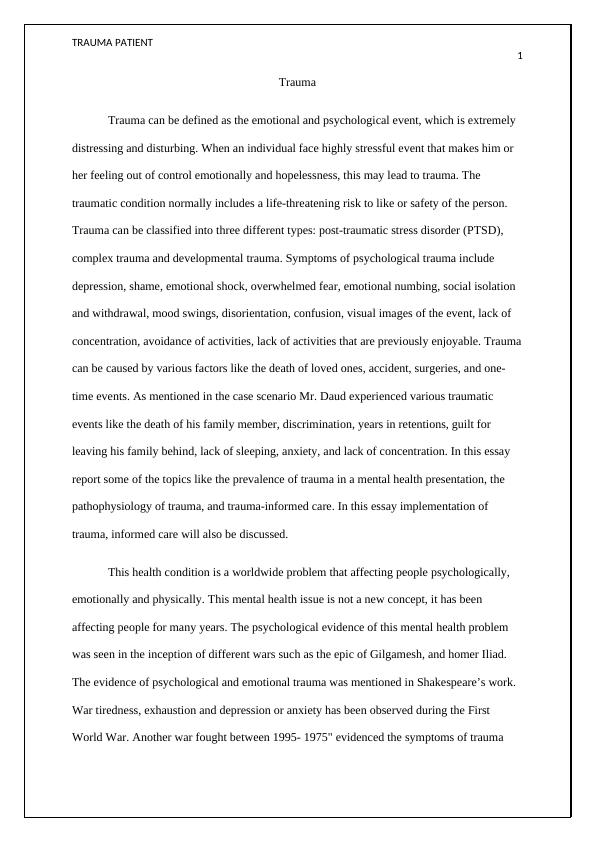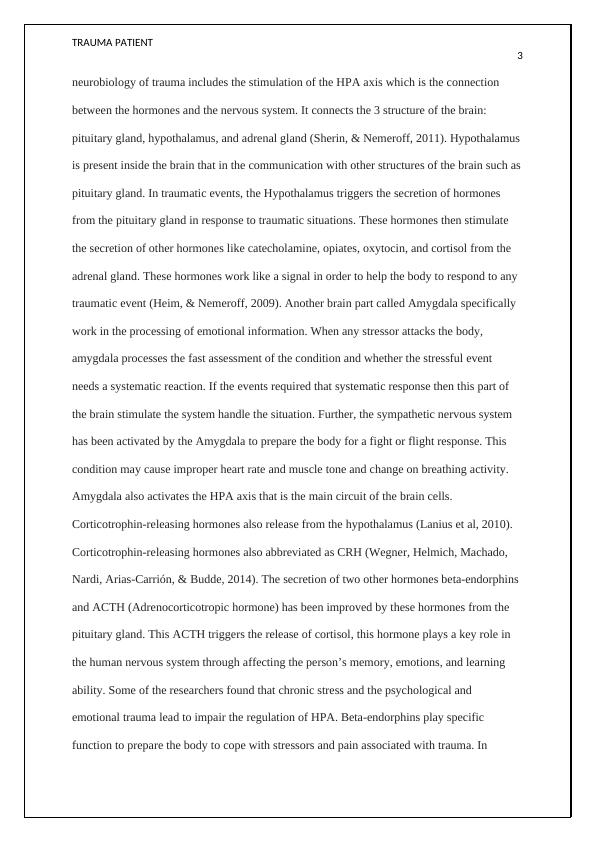Trauma Patient: Prevalence, Pathophysiology, and Trauma-Informed Care
Provide assessment and trauma counselling for Amir Daud, a 28-year-old refugee from Afghanistan who has recently been released from detention and is living in supported accommodation. Amir has experienced discrimination, witnessed the murder of family members, and has had limited communication with his family. He is feeling hopeless and needs assistance in finding employment.
Added on 2023-06-03
About This Document
Trauma Patient: Prevalence, Pathophysiology, and Trauma-Informed Care
Provide assessment and trauma counselling for Amir Daud, a 28-year-old refugee from Afghanistan who has recently been released from detention and is living in supported accommodation. Amir has experienced discrimination, witnessed the murder of family members, and has had limited communication with his family. He is feeling hopeless and needs assistance in finding employment.
Added on 2023-06-03
End of preview
Want to access all the pages? Upload your documents or become a member.




